Leadership Training in the Philippines that Creates Shifts
Many Filipino managers are promoted into leadership without preparation. One day they’re excellent performers. The next, they’re told: “Ikaw na ang leader.” Excitement quickly turns into pressure. Teams look to them for direction, yet they feel lost, untrained, and afraid of failing.
If you’ve ever seen a newly promoted supervisor avoid giving feedback, delay tough decisions, or break down in silence—then you’ve seen how lack of leadership training costs not just performance, but people.
In the Philippines, most leadership training programs focus on theories, slides, and acronyms. People clap, smile, and thank the speaker—then return to old habits. Nothing shifts. Leaders remain performers, not builders. Teams stay dependent. Organizations stall.
The hidden cost? Burnout, high turnover, and wasted potential.
Without real leadership development, Filipino organizations keep promoting people into pressure instead of preparation. And every time that happens, culture breaks.
But it doesn’t have to be this way.
Our Leadership Training in the Philippines is not just about content—it’s about transformation.
Designed by Jef Menguin, one of the country’s most trusted leadership trainers, these programs don’t just “teach leadership.” It creates visible shifts:
- From avoiding feedback → to leading hard conversations with confidence
- From micromanaging → to building ownership in teams
- From being promoted into pressure → to being prepared to lead
Every session is built with Shift Experience Design (SXD)—a method that ensures participants don’t just learn about leadership; they practice it, win with it, and act on it before they leave the room.
Why Organizations Trust Us
- Strategic Learning Consultants, Inc. is one of the most trusted training providers in the Philippines.
- We have helped leaders in government, schools, and top companies across Metro Manila, Laguna, Batangas, Cavite, and nationwide.
- Our programs are practical, immersive, and results-driven—not one-size-fits-all lectures.
Don’t wait until your managers burn out. Equip them today.
Shift Experiences
👉 Explore my leadership programs — each crafted to help you build leaders, align teams, and grow a culture that sticks.

Creative Leadership Workshop
From ordinary to extraordinary. No stale ideas. No vague plans. Just innovation in action.
Creativity unlocks 10x impact.
In one day, your team will:
- Use strategic tools to turn ideas into results.
- Solve real-world problems with innovation challenges.
- Build a mindset for continuous creative action.
This leadership training isn’t brainstorming. This is game-changing leadership.
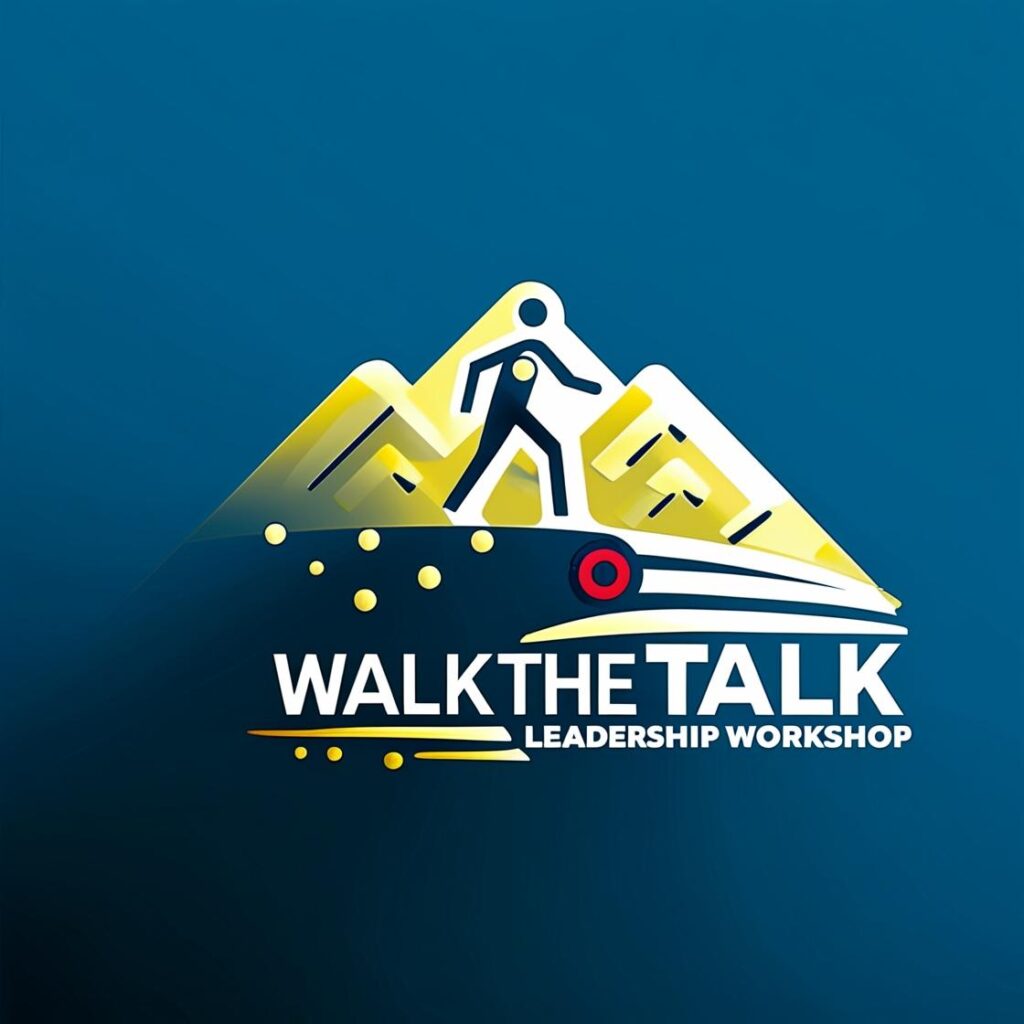
Walk the Talk Leadership Workshop
From words to action. No empty promises. No misalignment. Just authentic leadership.
Leaders inspire trust when they lead by example.
In one day, we’ll help your leaders:
↳ Align their actions with their values and commitments.
↳ Build credibility and trust through consistent, authentic behavior.
↳ Inspire their teams to follow with confidence and purpose.
Lead with integrity. Build trust that lasts. Let’s start walking the talk today.

GROW Coaching Workshop
From stuck to solution-focused. No fluff. No wasted time. Just clarity and progress.
Coaching leaders to empower their teams is a game-changer.
In one day, we’ll guide your leaders to:
↳ Master the GROW coaching framework for impactful conversations.
↳ Set clear goals and define actionable pathways forward.
↳ Foster accountability and growth in their teams.
Bring this leadership training to your organization. Lead with clarity. Coach with confidence.
Let’s grow your leaders today.
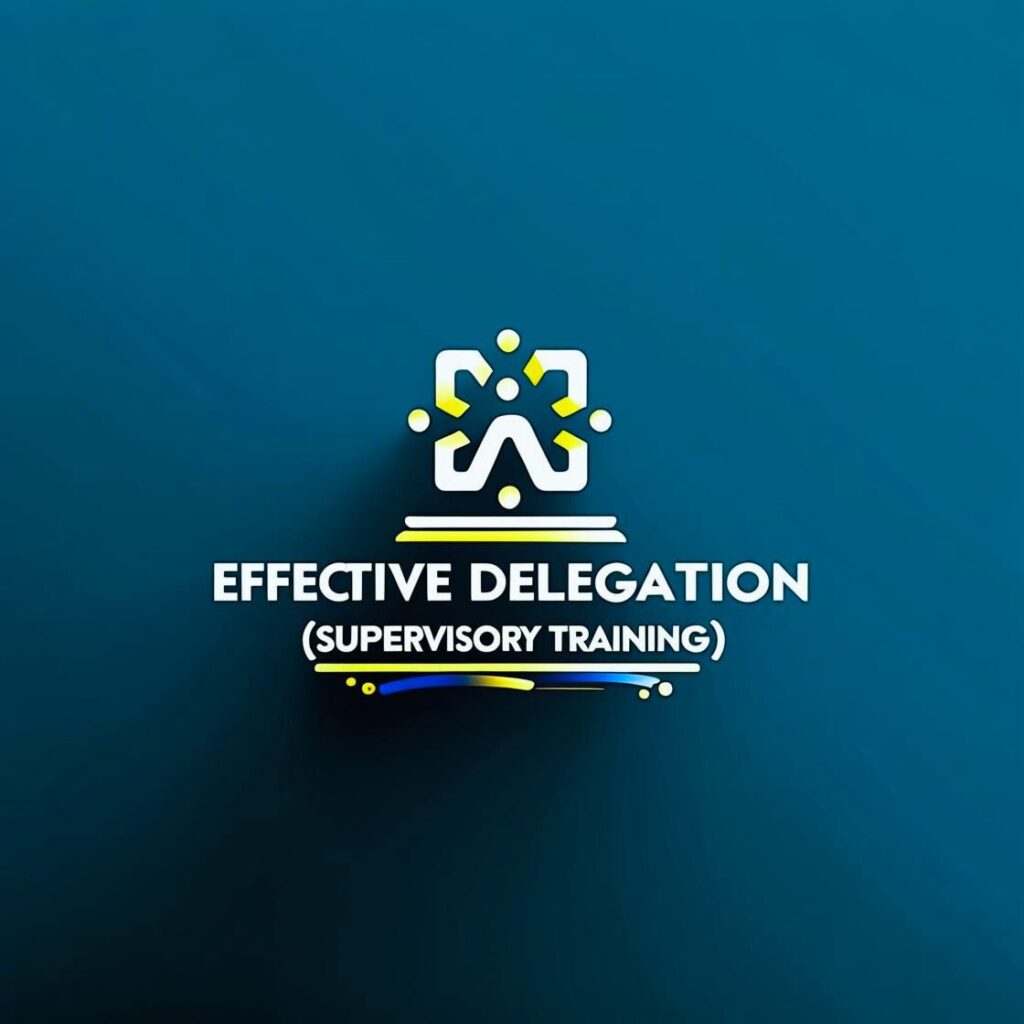
Effective Delegation Workshop
From overwhelmed to empowered. No micromanaging. No dropped balls. Just results-driven leadership.
Delegation is the secret to scaling leadership impact.
In one day, we’ll teach your leaders to:
↳ Delegate tasks with clarity and confidence to the right people.
↳ Empower their teams while maintaining accountability.
↳ Free up time to focus on high-impact priorities.
Lead smarter. Achieve more. Let’s master delegation today.

Personal Accountability Workshop
From excuses to ownership. No finger-pointing. No blame. Just results.
Accountability drives 10x results.
In just one day, your team will:
- Take full ownership of outcomes.
- Replace excuses and procrastination with action.
- Create a results-driven culture that moves fast.
No delays. No excuses. Just accountability that delivers.
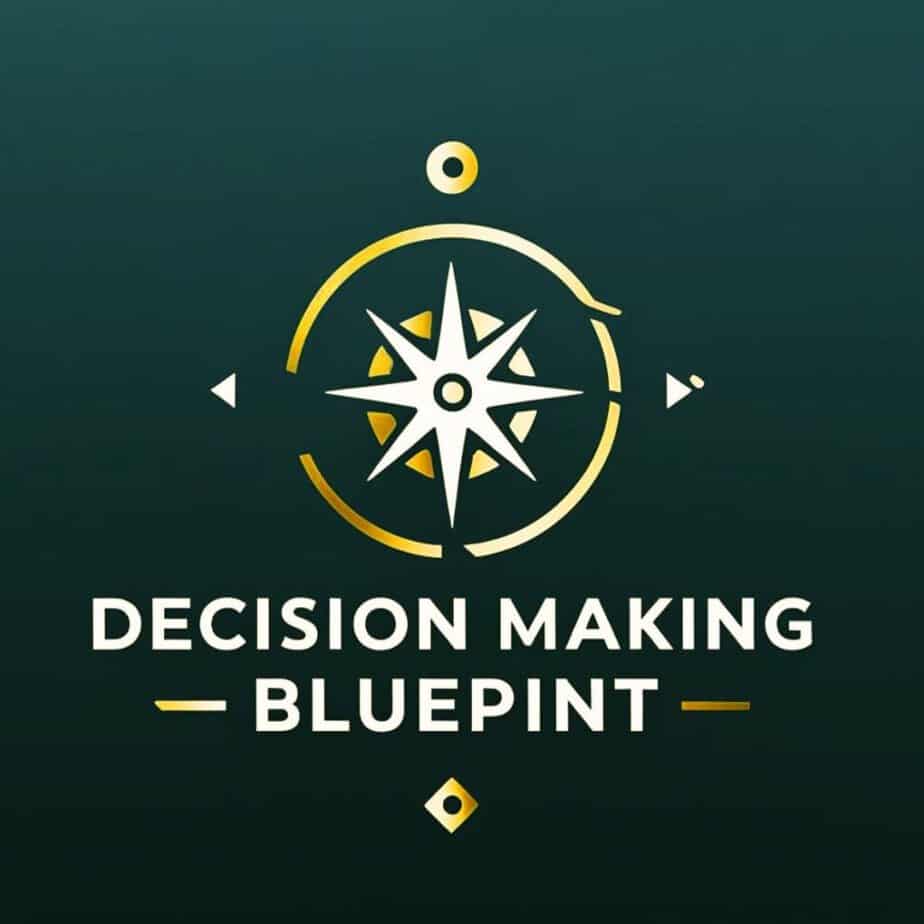
Decision-Making Blueprint Workshop
From hesitation to momentum. No overthinking. No delays. Just action.
Decisions drive growth.
In one day, we’ll teach your team to:
- Make bold, fast decisions under pressure.
- Analyze options without getting stuck.
- Execute with confidence to drive results—faster.
Stop stalling. Start scaling.
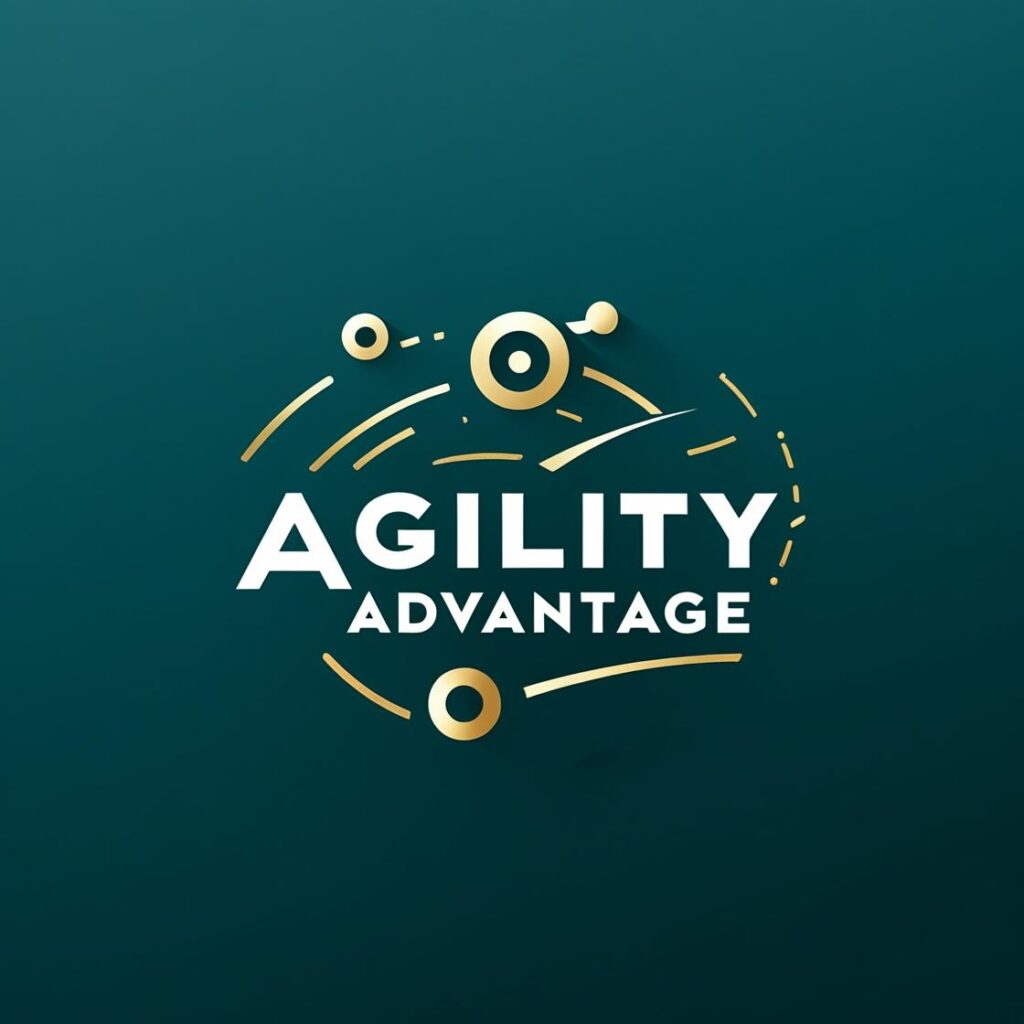
Agility Advantage Workshop for Leaders
From stuck to adaptable. No resistance. No rigidity. Just speed and innovation.
Agility is the new competitive edge.
In one day, your team will learn:
- How to adapt to shifting priorities fast.
- Tools to respond to change without losing momentum.
- Strategies to stay flexible while maintaining focus on 10x goals.
Be agile. Deliver faster.
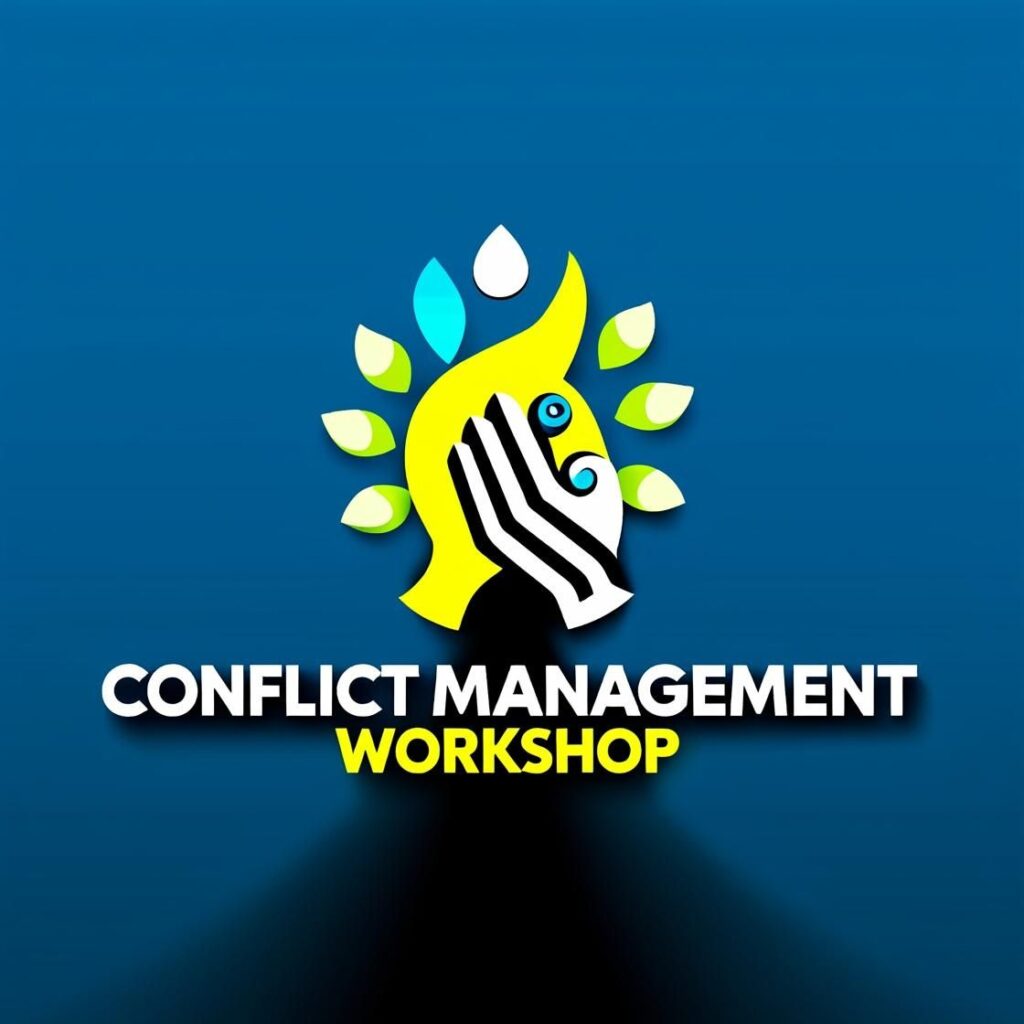
Conflict Management Workshop
From tension to transformation. No unresolved issues. No workplace friction. Just productive outcomes.
Conflict doesn’t have to divide—it can unite and strengthen teams.
In one day, we’ll equip your leaders to:
↳ Address conflicts confidently and constructively.
↳ Turn disagreements into opportunities for growth and innovation.
↳ Build a culture where challenges strengthen relationships and outcomes.
Transform tension into teamwork. Let’s manage conflict effectively today.

The Influencer’s Playbook
From unnoticed to unstoppable. No micromanaging. No forcing. Just tools that inspire.
Leaders influence action.
In one day, you’ll master:
- Tools to inspire behavior change for 10x results.
- Techniques to lead through trust and impact.
- Strategies to influence without force or micromanaging.
This leadership training isn’t about control—it’s about transformation.

Motivation Multiplier
From burnout to fired up. No gimmicks. No fluff. Just unstoppable energy.
Motivated leaders ignite motivated teams.
In one day, we’ll empower your leaders to:
↳ Discover what truly drives their team’s performance.
↳ Build strategies that create a culture of energy and engagement.
↳ Sustain motivation to consistently deliver 10x results.
Reignite the spark. Multiply the energy. Let’s fire up your team today.

Impromptu Speech Genius
From hesitation to confidence. No scripts. No panic. Just powerful, on-the-spot speaking.
Great leaders speak with clarity—even without preparation.
In two days, we’ll help your leaders:
↳ Master techniques to organize thoughts quickly and deliver with impact.
↳ Build confidence to handle tough questions and unexpected moments.
↳ Develop a natural speaking style that engages and inspires any audience.
Speak with power. Lead with confidence. Let’s sharpen your impromptu skills today.

Speak to Influence & Impact
From talking to transforming. No hesitation. No disconnection. Just communication that inspires action.
Great leaders don’t just speak—they influence and drive results.
In two days, we’ll equip your leaders to:
↳ Communicate with clarity and confidence to inspire trust.
↳ Craft messages that influence decisions and drive action.
↳ Build presence and impact that commands any room.
Speak to lead. Influence to transform. Let’s amplify your leadership voice today.
Jef Menguin: Shift Designer
Jef Menguin is a leadership trainer who helps people and organizations change for the better. His work is not just about teaching skills. It’s about creating shifts—moments that transform how people think, act, and lead.
Since 2004, Jef has delivered leadership workshops across the Philippines and in Malaysia, Indonesia, Thailand, Taiwan, and Singapore. Thousands of managers, supervisors, teachers, and executives have experienced his programs.
The System of Shifts
Jef does not believe in one-time talks that people forget. He builds tools, books, and workshops that leaders can use again and again.
He has written 15 books, including three that he gives away for free. His Shift Series shows how real change happens in people and organizations:
- Start With One Shift – how one small step can spark big growth
- Culture That Sticks – how leaders build strong workplace culture
- Create Shifts – how trainers design sessions that move people, not just entertain
- The Shift Is the Strategy – how executives turn behavior into their biggest asset
Every book is practical. Every lesson is designed for action.
He also writes a weekly newsletter called One Shift and daily Microshifts. These are short, powerful lessons CEOs, managers, and HR leaders can apply right away.
The Impact Since 2004
For more than two decades, Jef has helped companies, schools, and government offices solve real problems:
- A company struggling with high turnover learned how to build ownership and trust.
- A government agency cut weeks of delay into days by using Jef’s decision-making tools.
- Organizations strengthened their culture through his Team Bayanihan programs.
In every case, leaders saw visible results: stronger teams, clearer decisions, and cultures that last.
Why Leaders Trust Jef Menguin
- He has trained people across Asia.
- He has authored books leaders can use even outside the training room.
- He designs learning experiences that create change, not just applause.
- He shares practical insights every week through One Shift.
- He can be found on LinkedIn, where he continues to teach and inspire.
👉 If you are a CEO or manager who wants leadership training that actually works, Jef Menguin can help you create shifts that last.
What is leadership training?
Leadership training isn’t about learning how to boss people around.
It’s not about memorizing acronyms or copying how the CEO walks into a room.
Leadership training is the intentional process of helping people think, act, and communicate in ways that influence others toward meaningful outcomes.
That’s it. It’s about people. About getting better at decisions, relationships, and responsibilities — when everyone’s watching and when no one is.
In science-speak: it’s behavior change.
In the workplace: it’s impact.
In life: it’s growth.
Why is leadership training important?
Because everything rises and falls on leadership.
And most people were promoted into leadership, but never prepared for it.
They get the title, the pressure, and the problems — but not the tools.
Here’s what the research says:
- Gallup found that 70% of employee engagement depends on the manager.
- Harvard Business Review reports that poor leadership is the #1 reason good people leave.
- And neuroscience tells us that leaders shape the emotional climate of their teams, moment by moment.
Leadership training matters because untrained leaders don’t stay “neutral” — they create confusion, mistrust, and wasted potential.
How to develop effective leaders?
Let’s keep this practical. Leaders aren’t born. They’re built.
Like muscles, leadership is developed by consistent, intentional reps.
Here’s how:
- Start with self-awareness
Great leadership begins with knowing yourself — your triggers, blind spots, strengths.
Think: feedback, coaching, reflection. - Build critical skills
Communication. Decision-making. Emotional intelligence. Delegation. Conflict resolution.
These aren’t soft skills. They’re power skills. - Create real-world practice
Leadership isn’t learned in a classroom — it’s tested in meetings, in mistakes, in messy moments.
Give people stretch assignments. Let them lead projects. Let them fail safely and grow. - Embed it in culture
Training isn’t a one-day event. It’s a system.
Build a culture that models, rewards, and expects leadership at every level.
Let’s land this.
Leadership training is how we grow the people who grow the business. It’s not fluff. It’s not optional. It’s the difference between survival and success.
Train leaders not just to manage, but to multiply.
Not just to follow rules, but to shape culture.
Because when leadership gets better — everything does.
Drive Results
Most leadership training fails because it focuses on skills in isolation—communication, problem-solving, decision-making—without a clear strategy.
But great leaders don’t just master skills; they execute strategies that drive real business impact.
In this guide, you’ll learn:
↳ Why strategic clarity is the foundation of leadership success.
↳ How execution discipline turns plans into real progress.
↳ The secret to decisive leadership—and why hesitation kills momentum.
↳ How coaching and conflict mastery build high-performance teams.
↳ The habits and mindset shifts that separate average leaders from great ones.
If you want leadership training that creates real change—not just another workshop—learn the 10 strategies top leaders use every day.

What Most People Get Wrong About Leadership Training
Most leadership programs are predictable.
You gather a bunch of people in a room, deliver a few PowerPoint slides, share a couple of generic case studies, throw in some management theory, and then expect everyone to leave as better leaders. But let’s be real—how many people actually change their leadership style after these cookie-cutter sessions?
The problem is that these programs focus too much on theory and not enough on practical, real-world leadership challenges.
They forget one crucial fact: leadership isn’t learned in a classroom. It’s learned on the battlefield of everyday work.
Why That Approach Fails
The reality? The average participant forgets 75% of the material within a week. People leave with a head full of buzzwords and frameworks, but no real understanding of how to apply them. That’s why leaders still struggle to inspire their teams, make tough decisions, or drive real results. They don’t need more theory; they need a game plan that works in the trenches.
A Better Way to Train Leaders
Take real leadership development—what’s different? Imagine a workshop where participants aren’t sitting and listening, but actively solving real problems, engaging in challenges that mirror the messy, unpredictable nature of leadership. They’re not just talking about leading; they’re actually doing it.
In my workshops, we don’t waste time on endless lectures. Instead, participants work in teams to solve high-pressure, real-world scenarios. They’re forced to communicate, make decisions, and step up as leaders in the moment. And guess what? They leave the room with a new mindset, ready to apply what they’ve learned immediately.
Why This Approach Works
Here’s why my leadership training is different: it’s all about experience. No fluff, no filler.
I focus on immersive, hands-on activities that get people out of their comfort zones. Participants don’t just learn the theory—they practice it. Right then and there.
And it sticks. Because when you’re pushed to lead under pressure, when you’re tested in real-world situations, you’re not just learning—you’re transforming.
How to Run Leadership Training that Actually Works
So how do you do it? Here are five key pointers to run leadership training that gets real results:
- Ditch the PowerPoint. Instead, create live scenarios that challenge participants to lead.
- Make it interactive. Get them moving, talking, and solving problems in real-time.
- Focus on real challenges. Use exercises that mirror the toughest leadership situations people face at work.
- Debrief deeply. After each activity, dive into what worked, what didn’t, and how they can improve.
- Give them a playbook. Provide simple, actionable strategies they can start using the moment they leave the room.
Inquire about leadership training.
15 Topics for Leadership Training in the Philippines
Most leadership trainings talk a big game. But when the session ends, managers go back to firefighting—same habits, same frustrations, no real shift.
That’s not what we do.
These 15 topics are built for real-world leadership—where pressure is high, clarity is low, and results actually matter.
Each one tackles the invisible blockers teams face every day: slow decisions, misalignment, trust gaps, wasted meetings, and ideas that never land.
We don’t stop at theory. We get our hands dirty.
We design immersive, practical, and Filipino-relevant experiences that change how leaders think, act, and lead—right away.
Pick a topic. Or pick the problem you’re tired of tolerating.
We’ll meet you there. Then move you forward.
Accountability
When no one owns the outcome, everyone gets busy—and nothing gets done. Accountability isn’t about blame. It’s about building a team that follows through. Every time.
Adaptability
The market moves. Policies shift. Teams change. But your managers? Still clinging to old habits. This session teaches them how to bend without breaking.
Agility
Speed means nothing if your team’s confused. Agility is about moving with clarity, not just motion. We’ll show your leaders how to stay sharp in the chaos.
Clarity
Confused teams slow down. They hesitate. They wait. Clarity kills noise. It aligns action. And it starts with how your leaders show up.
Collaboration
Collaboration isn’t about more meetings—it’s about less friction. Give your team the tools to move together, not just side by side.
Creative Leadership
Stuck teams aren’t lazy—they’re trapped in stale thinking. This session provides leaders with fresh ways to tackle old problems.
Critical Thinking
Bad decisions don’t come from bad people. They come from unchallenged thinking. We help managers see clearer, question deeper, and lead smarter.
Decision Making
Waiting. Overthinking. Doubting. Weak decision-making costs time, trust, and momentum. We’ll help your leaders decide—and commit.
Execution
Great plans die in the gap between meetings and action. Execution isn’t a talent. It’s a system. We teach your leaders how to make things move.
Influence
Authority gets things done. Influence gets people behind you. This workshop helps leaders lead without pushing.
Innovation
If everything stays safe, nothing moves forward. Innovation starts with leadership—and this session shows them how to make space for it.
Problem Solving
Your team isn’t solving the wrong problems. They’re solving the wrong versions of them. We teach leaders how to get to the root—and fix what matters.
Resilience
Burnout isn’t a badge. It’s a warning. Resilience is the skill that helps leaders lead when things get heavy. And it’s teachable.
Strategic Thinking
If your leaders are too busy to think, they’re too busy to lead. Strategy isn’t a retreat—it’s a mindset. We’ll help them zoom out and choose better.
Trust
Without trust, everything slows down. With it, teams move faster, talk clearer, and lead with less noise. We teach leaders how to build it—daily.
Why Most Leadership Training in the Philippines Misses the Mark
Here’s the uncomfortable truth: most leadership training in the Philippines is imported. You walk into a workshop, and what do you get? Lessons based on U.S. authors and western ideas. It’s all about hierarchical structures, individualism, and leadership theories built for a different world.
The problem? These concepts often fall flat when applied in our local context. They don’t speak to the realities Filipino leaders face—the nuances of our culture, the challenges of leading teams in the Philippines, and the strengths that make our leadership style unique. The result? Leaders who try to apply these theories but end up disconnected from their teams, struggling to lead effectively.
Why Western Leadership Models Don’t Fit
Western leadership frameworks are rooted in values like direct communication, independence, and an individualistic approach to success. But in the Philippines, we’re driven by different values—pakikisama (harmony), bayanihan (community), and a deeply relational approach to leadership.
In a western model, success is often about what you achieve. In the Filipino context, success is just as much about how you achieve it—through relationships, trust, and shared responsibility. Western models teach you to lead from the front, but in the Philippines, great leaders often lead from within, by empowering and inspiring their teams.
This is why most leadership training here doesn’t quite hit the mark. It’s out of sync with our strengths and realities.
A Leadership Approach That Works for Us
So, what does effective leadership training in the Philippines look like? It’s rooted in context. Instead of following one-size-fits-all models, we need leadership programs that draw from Filipino culture, values, and strengths. It’s about creating a leadership style that’s ours—authentic to who we are.
In my workshops, we dive into the unique aspects of Filipino leadership. We talk about malasakit (compassion and care), utang na loob (deep gratitude and reciprocity), and how Filipino leaders can harness these strengths to create a work environment that’s collaborative, productive, and resilient.
Instead of just teaching theory, we focus on practical, culturally relevant strategies. For instance, how to balance pakikisama with accountability, or how to foster bayanihan to inspire teamwork in times of crisis.
Why This Approach Works
Here’s why training leaders based on our own context is powerful: it resonates. It’s immediately relatable because it speaks the same language as our leaders, both literally and culturally. They see themselves in the training. They understand the stories. They relate to the examples. And most importantly, they know how to apply the lessons the moment they step back into their offices.
Let me give you an example: In one of my sessions, we discussed the importance of malasakit—not just as a value but as a leadership strategy. Leaders learned how to demonstrate authentic care for their teams while still driving performance. The result? Teams that work harder because they feel supported and valued—not just as employees but as individuals.
How to Train Filipino Leaders for Success
Here’s how to build leadership training that empowers Filipino leaders:
- Embrace local values. Start with what makes Filipino leadership unique—values like bayanihan, malasakit, and pakikisama.
- Use real-world examples. Skip the case studies from Silicon Valley. Focus on Filipino success stories—like how local companies thrive by fostering community.
- Make it relational. In the Philippines, leadership is about relationships. Train leaders to build trust, loyalty, and respect in ways that resonate with their teams.
- Balance compassion with results. Teach leaders how to care for their people while still holding them accountable to high standards.
- Leverage Filipino resilience. Train leaders to tap into the inherent resilience and adaptability of Filipinos, especially in times of uncertainty.

Why Canned Leadership Training Fails (And What to Do Instead)
Most companies go for the “easy win” when it comes to leadership training. They buy off-the-shelf programs, slap their logo on it, and call it a day. You’ve seen them—the same old slides, the same stories, the same one-size-fits-all approach. It’s quick, convenient, and costs less upfront. But there’s one big problem: it doesn’t work.
Canned programs fail to connect with the actual, specific problems your leaders are facing. They’re generic. And in leadership, generic doesn’t cut it.
Why Off-the-Shelf Training Fails to Deliver
No two teams are alike. Leadership challenges differ wildly depending on industry, company culture, team size, and even the personalities involved. Canned training assumes one solution fits all. But what happens when your team doesn’t fit the mold?
The result: leaders walk out of these programs no different than when they walked in. They’ve sat through hours of “best practices” but can’t see how any of it applies to their real-world problems. They haven’t learned how to lead their team. They’ve just learned how to lead a team.
A Better Approach: Customized Leadership Training
Imagine this: instead of cookie-cutter content, your training program is built around the actual challenges your leaders face every day. The scenarios are pulled from your industry, your culture, and your specific team dynamics. Leaders don’t just learn—they experience leadership in action, relevant to their world.
In my customized training sessions, I take a deep dive into the company’s specific needs. I interview key stakeholders, observe how teams operate, and then create a program that speaks directly to the real challenges. I don’t show up with a pre-packaged script. I show up with solutions tailored to the context of your organization.
Why Customized Training Works
Here’s why tailored training is different: it speaks to your leaders in a language they understand. It’s immediately applicable. They walk out knowing exactly how to handle the unique situations they’re facing, not just in theory, but with actionable insights.
One of my clients was struggling with a lack of accountability across teams. A canned program would’ve given them the usual spiel about empowerment and responsibility. But we took a customized approach. We dug deep into the company culture, identified where accountability was breaking down, and designed activities that helped leaders drive ownership across their teams. Within months, results were visible.
Canned Training vs. Customized: A Clear Winner
Let’s make it clear. Canned training is convenient, but it’s not transformational. If you want surface-level change, go for it. But if you’re aiming for deep, meaningful leadership growth, customized training is the only way forward.
Here’s How to Build Customized Training that Gets Results
- Diagnose first. Understand the specific leadership challenges your team is facing.
- Tailor the content. Create scenarios, role-plays, and exercises that mirror your company’s unique leadership issues.
- Make it relevant. Ensure every example, every story, every activity speaks to the real-world challenges in your industry.
- Focus on practical application. Leaders should walk away with strategies they can use immediately.
- Adapt as you go. Customize even further during the program based on participant feedback and engagement.

Why Most Training Keeps You Stuck in the C-Game (and How to Fix It)
Let’s be honest—most training programs are designed for the average. The content is safe, the goals are modest, and the outcomes are predictable. Everyone leaves with a few new buzzwords and some “action items” that end up in the drawer. It’s like being stuck in your C-game.
If you’re running these kinds of training programs, let’s face it—you’re not leveling up your team. You’re keeping them where they are.
The C-Game Trap: Why Ordinary Training Programs Fail
The C-game is comfortable. It’s where you show up, do what’s required, and go home. But here’s the problem: growth doesn’t happen in your comfort zone. And that’s where most training programs fall flat. They don’t push people beyond their current limits. They don’t challenge them to think bigger, act bolder, or aim higher.
Training that keeps you in the C-game may check all the boxes, but it doesn’t bring out the best in anyone.
How to Design Training that Pushes You to the A-Game
So what’s different about training that gets you to your A-game? It’s immersive, intense, and designed to push participants to their highest potential. It’s not just about learning new skills—it’s about mastering the right mindset. It challenges people to embrace discomfort, take risks, and strive for excellence.
Imagine training where participants are not just attending—they’re leading, solving complex problems, and owning their growth. Training that forces them to break free from mediocrity and step into their A-game.
Here’s How It Works in Practice
In my A-game training sessions, participants are immediately thrown into high-pressure, real-world scenarios. They’re forced to think on their feet, lead under pressure, and make decisions that drive real outcomes. It’s designed to simulate the actual challenges they’ll face—not just the theory.
For example, one of my clients, a team of mid-level managers, was playing it safe, sticking to their comfort zones. We flipped the script. Instead of lectures, they were put in charge of leading cross-departmental projects under intense time constraints. It wasn’t pretty at first, but it worked. By the end, they weren’t just managing—they were leading.
Why A-Game Training Transforms Leaders
Here’s the kicker: A-game training isn’t just about skill-building. It’s about a mindset shift. It changes the way people see themselves and their role in the organization. They stop thinking in terms of “good enough” and start aiming for “what’s possible.” They don’t just show up—they step up.
When you push people to their A-game, you’re not just improving their performance—you’re transforming their potential.
How to Create A-Game Training Programs
Here’s how to design training that brings your team to the A-game:
- Set higher standards. Don’t settle for incremental improvement—aim for breakthrough results.
- Use real-world challenges. Design activities that mirror the actual pressures and problems they’ll face in the workplace.
- Focus on mindset, not just skills. Push participants to develop an A-game mentality—resilience, grit, and a hunger for excellence.
- Make it uncomfortable. Growth doesn’t happen in the comfort zone. Design your training to push participants beyond what they think they can handle.
- Give them ownership. Make participants accountable for their own learning and success. They need to own their growth, not be spoon-fed solutions.
